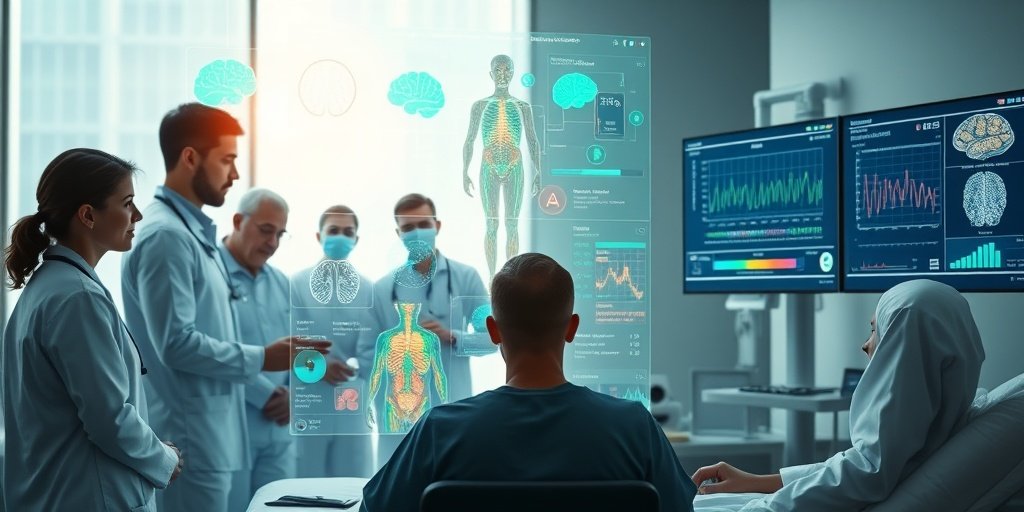⚡ Quick Summary
This article discusses the urgent need to address persistent pain, which affects one-fifth of the global population, by moving from isolated biomarkers to integrated biopsychosocial signatures. By combining biological, psychological, and social factors, we can enhance the prediction, prevention, and treatment of pain.
🔍 Key Details
- 🌍 Global Impact: Affects 20% of the population
- 🔬 Research Focus: Transition from isolated biomarkers to composite signatures
- 🧠 Integration: Combines neuroimaging, multiomics, and sensor data
- 🤝 Collaboration: Emphasizes team science across disciplines
- 💻 Technology: Utilizes artificial intelligence for data analysis
🔑 Key Takeaways
- 📊 Persistent pain is a significant healthcare crisis worldwide.
- 🔄 Shift in Research: Moving towards integrated biopsychosocial signatures.
- 🧩 Holistic Approach: Combines biological, psychological, and social factors.
- 🤖 AI and Team Science: Essential for advancing pain management strategies.
- 💡 Patient-Centric Care: Keeping the patient’s voice central in treatment.
- 🔍 Future Vision: Making pain predictable, preventable, and treatable.

📚 Background
Persistent pain is a complex condition that challenges traditional healthcare approaches. With its prevalence affecting a significant portion of the population, there is an urgent need for innovative strategies that go beyond conventional treatments. The integration of various disciplines and technologies is crucial for developing a comprehensive understanding of pain and its multifaceted nature.
🗒️ Study
The perspective presented by Cruz-Almeida emphasizes the evolution of pain research. It advocates for a shift from focusing solely on isolated biomarkers to creating composite biomarker signatures that incorporate diverse data sources, including neuroimaging, multiomics, and sensor data. This integrated approach aims to provide a more complete picture of pain and its underlying mechanisms.
📈 Results
The article highlights the potential of artificial intelligence and cross-disciplinary collaboration in transforming pain management. By leveraging these technologies, researchers can develop more accurate predictive models and treatment strategies, ultimately leading to improved patient outcomes and a better understanding of persistent pain.
🌍 Impact and Implications
The implications of this research are profound. By adopting an integrated biopsychosocial approach, healthcare providers can offer more personalized and effective pain management solutions. This shift not only enhances treatment efficacy but also fosters a more compassionate healthcare environment that prioritizes the patient’s experience and perspective.
🔮 Conclusion
The transition towards integrated biopsychosocial signatures represents a significant advancement in pain research. By embracing a holistic view that combines biological, psychological, and social factors, we can pave the way for more effective and compassionate pain management strategies. The future of pain treatment looks promising, and continued research in this area is essential for improving patient care.
💬 Your comments
What are your thoughts on this innovative approach to understanding and treating persistent pain? We invite you to share your insights in the comments below or connect with us on social media! 💬
Integrated biopsychosocial signatures: moving beyond isolated biomarkers to predict, prevent, and treat persistent pain.
Abstract
Persistent pain affects one-fifth of the global population, creating a healthcare crisis that defies conventional treatments and understanding. This perspective examines how pain research is evolving from seeking isolated biomarkers to developing composite biomarker signatures that integrate neuroimaging, multiomics, and sensor data. The future requires further advancement toward integrated biopsychosocial signatures that combine these biological markers with psychological and social factors to create truly holistic pain characterizations. Achieving this requires shifting from siloed research to team science integrating diverse disciplines and patient perspectives. Through artificial intelligence and cross-disciplinary collaboration, we can envision making persistent pain predictable, preventable, and precisely treatable while maintaining the patient’s voice as central to compassionate care.
Author: [‘Cruz-Almeida Y’]
Journal: Pain
Citation: Cruz-Almeida Y. Integrated biopsychosocial signatures: moving beyond isolated biomarkers to predict, prevent, and treat persistent pain. Integrated biopsychosocial signatures: moving beyond isolated biomarkers to predict, prevent, and treat persistent pain. 2025; 166:S99-S102. doi: 10.1097/j.pain.0000000000003635